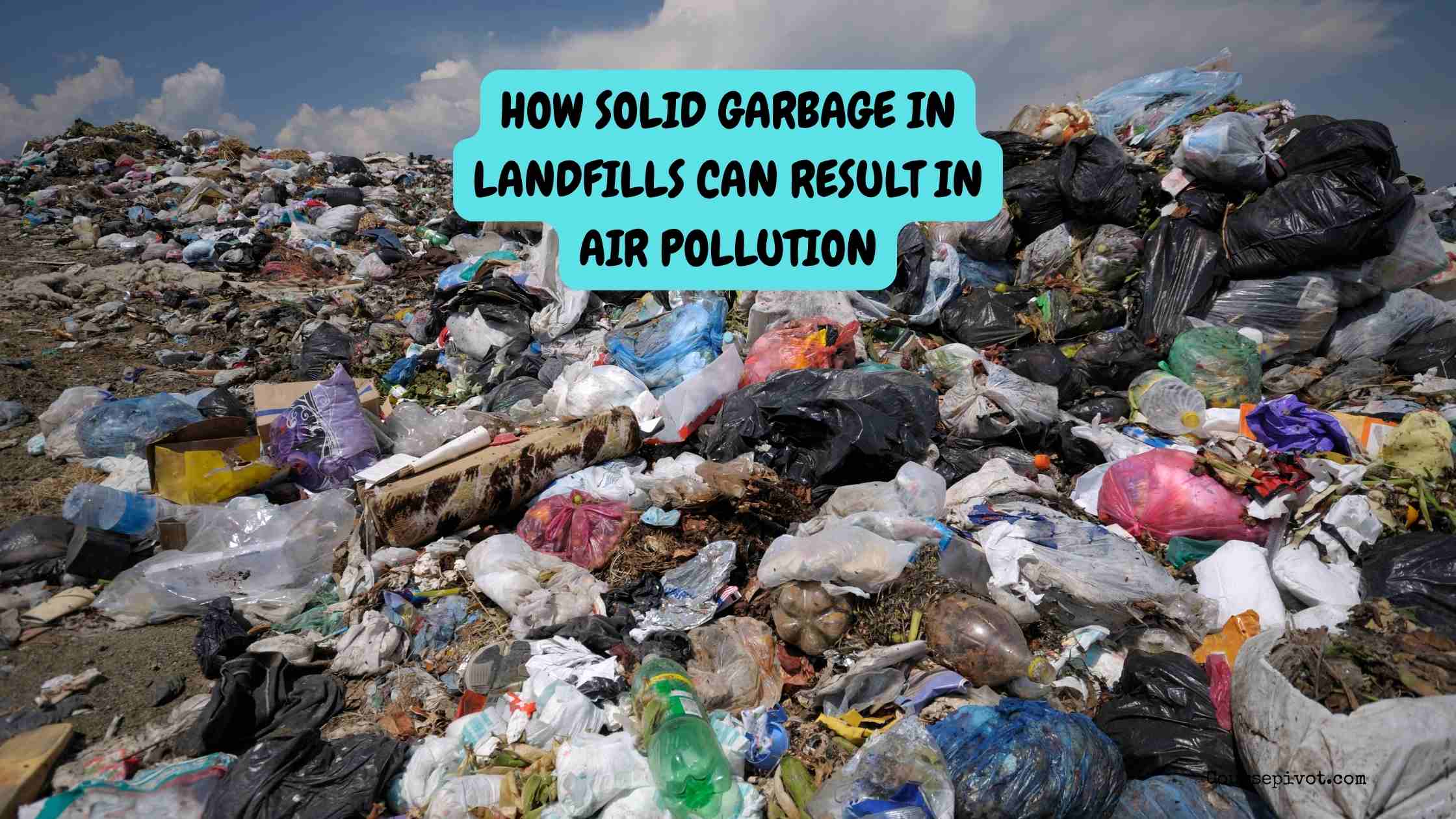
How Solid Garbage in Landfills Can Result in Air Pollution
Landfills, often seen as a necessary solution for managing solid waste, can significantly contribute to air pollution, impacting both local communities and the global atmosphere. I’ve been struck by how the waste we discard continues to affect the environment long after it’s buried. Understanding how solid garbage in landfills can result in air pollution is crucial for addressing its environmental consequences.
In this article, I’ll explain five key ways landfills pollute the air, drawing from my research and insights into waste management as of May 2025. These mechanisms reveal the hidden costs of waste disposal. Let’s dive into why landfills are a source of air pollution and what it means for our planet.
Table of Contents
Ever wondered how buried trash affects the air we breathe? Landfills are more than just dumps—they’re pollution hubs. Ready to explore five ways solid garbage creates air pollution?
Waste doesn’t just disappear in landfills. I’ve seen how it releases harmful gases over time. Let’s uncover how landfills impact air quality.
1. Methane Emissions from Decomposition
As organic waste like food scraps and paper decomposes anaerobically in landfills, it releases methane, a potent greenhouse gas. This is a primary way landfills cause air pollution. I’ve read about methane’s outsized role in climate change.
- Process. Bacteria break down organic matter, producing methane (CH4), which is 28 times more potent than CO2 over 100 years, per IPCC 2024.
- Scale. U.S. landfills emit 15% of national methane, about 114 million metric tons CO2-equivalent annually, per EPA 2025.
- Impact. Methane traps heat, accelerating global warming and degrading air quality.
Why it matters? Methane from landfills fuels climate change, affecting everyone.
2. Volatile Organic Compounds (VOCs) Release
Landfills emit VOCs from decaying waste and chemicals in products like paints or cleaners. This source of air pollution harms health and the environment. I’ve noticed how these invisible gases contribute to urban smog.
- Examples. Benzene and toluene from household waste, detected in 80% of U.S. landfill air samples, per EPA 2024.
- Effects. VOCs react with sunlight to form ground-level ozone, causing respiratory issues and smog in 30% of urban areas.
- Health risks. Long-term exposure increases cancer risk by 1–2%, per WHO.
Why it’s harmful? VOCs degrade air quality, endangering public health.
Read our blog on How Human Impact on the Environment Can Be Positive or Negative
3. Dust and Particulate Matter
Landfill operations, like waste dumping and covering, stir up dust and fine particles. This way solid garbage pollutes air affects nearby communities. I’ve seen dust clouds from landfill sites impacting local air.
- Sources. Heavy machinery and exposed waste release PM2.5 and PM10, tiny particles that penetrate lungs.
- Impact. Particulates cause 4 million premature deaths yearly, with landfills contributing 5% of urban PM, per WHO 2025.
- Local effects. Communities within 5 miles face 10% higher asthma rates, per 2024 studies.
Why it’s concerning? Dust worsens respiratory health and reduces air clarity.
4. Landfill Fires and Toxic Smoke
Accidental or spontaneous fires in landfills release toxic pollutants into the air. This air pollution mechanism is unpredictable but severe. I’ve been alarmed by reports of landfill fires spewing harmful smoke.
- Causes. Methane buildup or improper waste ignites, with 8,000 U.S. landfill fires annually, per NFPA 2024.
- Emissions. Fires release dioxins, carbon monoxide, and heavy metals, detected in 90% of landfill fire plumes.
- Impact. Smoke reduces air quality, with dioxins linked to 1% higher cancer risk in exposed areas, per EPA.
Why it’s critical? Fires turn landfills into acute air pollution sources.
5. Odor and Gaseous Pollutants
Decomposing waste produces foul-smelling gases like hydrogen sulfide (H2S), contributing to air pollution. This landfill pollution effect affects quality of life. I’ve driven past landfills and winced at the stench.
- Gases. H2S and ammonia from rotting waste, with 70% of landfills emitting detectable levels, per 2025 studies.
- Health effects. Low-level exposure causes headaches and nausea; high levels irritate lungs, per CDC.
- Community impact. Odors lower property values by 5–10% within 2 miles, per 2024 real estate data.
Why it matters? Odorous gases degrade air and community well-being.
Read our bog on How Human Impact on the Environment Can Be Positive or Negative
What’s Next for You
Grasping how solid garbage in landfills can result in air pollution is like uncovering a hidden environmental cost we can’t ignore. I’ve been amazed by how these five ways—methane emissions, VOCs, dust, fires, and odorous gases—show landfills’ far-reaching impact on air quality. With 2.24 billion tons of global municipal waste landfilled yearly, per UN 2023, and 40% of U.S. landfills nearing capacity by 2025, action is urgent. Ignoring this risks worsens climate and health crises. Will you see landfills as harmless, or will you push for better solutions?
Here’s how to act:
- Reduce waste. Cut organic waste through composting to lower methane.
- Support regulations. Advocate for stricter landfill emissions controls, like methane capture systems.
- Learn more. Check EPA or WHO resources on waste management.
Landfills pollute the air we share. Why it matters is about health and sustainability. Start today to reduce waste and clean our skies.
Cite this article
You can copy and paste your preferred citation format below.
Martin, L. & Arquette, E.. (2025, May 31). How Solid Garbage in Landfills Can Result in Air Pollution. Coursepivot.com. https://coursepivot.com/blog/explain-how-solid-garbage-in-landfills-can-result-in-air-pollution/



